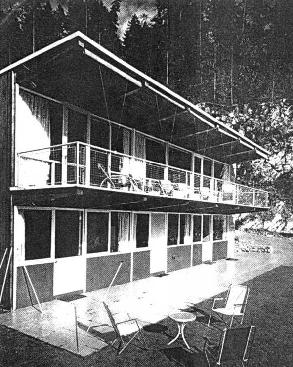
In this connection, it is evident to me that there is much confusion in the minds of Candians as to where we are going in architecture. In my opinion, our people, in attempting to justify national pride, have tended to ignore the importance of regional variations within the nation, particularly social ones. At the same time, we have magnified problems raised by the differences of weather and temperature to such an extent that, despite the availability of simple technical solutions, we seem pyschologically incapable of modifying certain pioneer or traditional elements of design, particularly those which had an origin in regional extremes of climate.
When people from the colder areas of Canada move to the more temperate climate of the coastal districts, their tendency is to adopt, with relief, an attitude of wanting minimum protection from the elements. But this attitude, in many instances, leads to technical exaggerations in construction which are caused mainly by lack of professional and scientific advice.On the other hand, it is quite obvious to us on the West Coast that the opposite has occurred on the Prairies and in the East. Here both psychological and physical influences, such as the occasional howling blizzard, cause pioneer traditions in building to continue. These influences, however, are for the most part physical and the problems they raise can be solved technically; they should not be allowed to effect in the slightest degree the creative approach to architecture.
Of course, it should be obvious that the architecture of British Columbia cannot be transplanted to the eastern Canada and no one should want to do so. The architects of Montreal, Toronto, Winnipeg and elsewhere in Canada are not incompetent by any means and have produced many fine examples of excellent Canadian architecture. But what they have accomplished in new work is submerged in the larger, more densely populated districts of the East, where it is not so easily noticed and experienced by the mass of the people.